Welcome to your comprehensive guide to Web3 domain services. Whether you’re new to the decentralized web or looking to deepen your understanding, this guide will walk you through everything you need to know about setting up and managing Web3 domains. From the basics to advanced tips, let’s explore why these domains are transforming digital identity and online presence.
The Story and Basics Behind Web3 Domains
Understanding the origins of Web3 domains gives valuable context to their importance. This section covers the evolution from traditional domain systems to the rise of decentralized domains powered by blockchain technology.
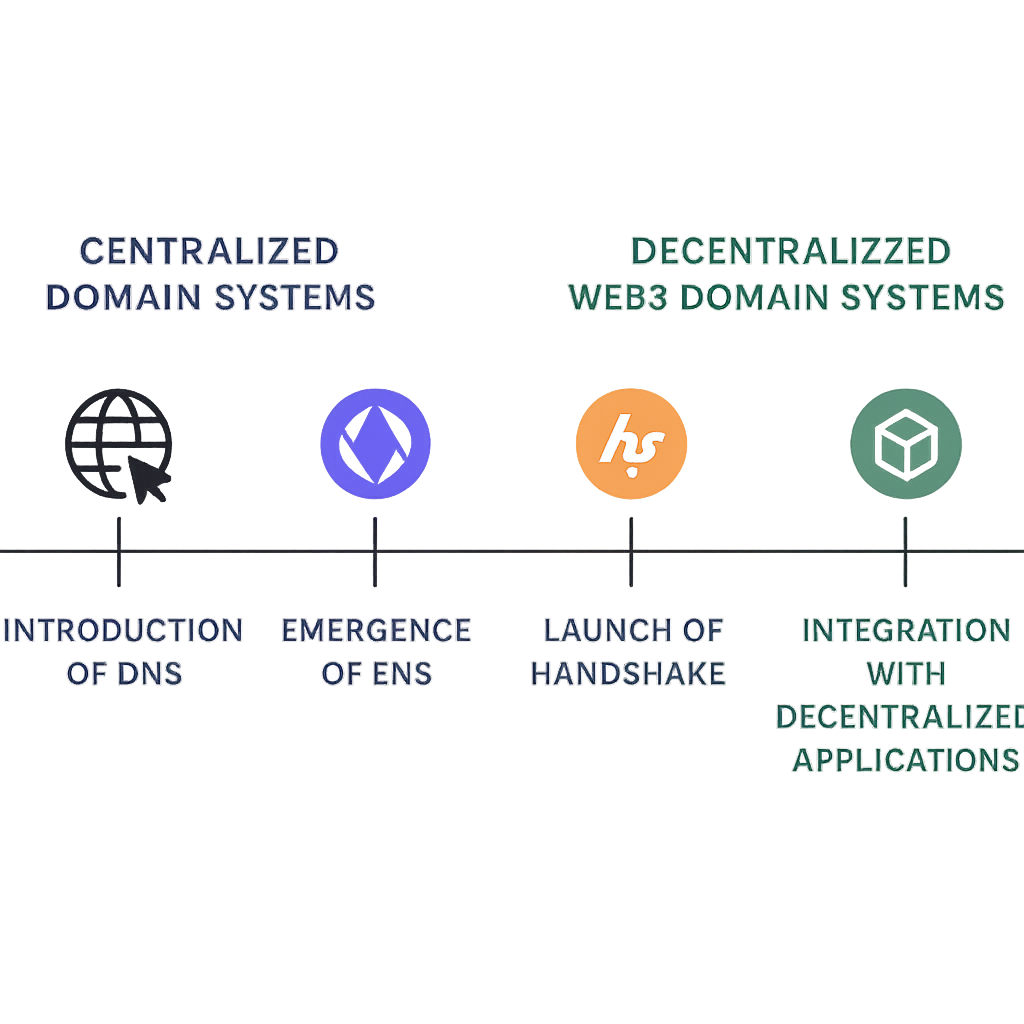
How Domain Names Came to Be
Domain names originated in the early 1980s with the introduction of the DNS system, simplifying complex IP addresses for easier access. These domains have traditionally been controlled by centralized authorities like ICANN, which, while effective, pose issues of censorship and lack of transparency.
The Boom of a Decentralized Internet
Web3 represents a shift toward decentralization, challenging the dominance of centralized platforms by empowering users to own their digital assets. Decentralized domains like ENS and Handshake exemplify this movement by offering censorship resistance and seamless integration with decentralized applications.
What Powers Web3 Domains Under the Hood
Web3 domains operate on blockchain protocols using smart contracts to manage ownership and functionality. Platforms like ENS link domain names to blockchain addresses or content hashes, while others like Unstoppable Domains represent domains as NFTs, providing secure, decentralized control unlike traditional DNS.
What Web3 Domains Really Are: Pros, Cons, and Everything Between
This section breaks down the core concept of Web3 domains, highlighting their benefits such as full ownership and security, as well as challenges including scalability and user experience.

Breaking Down Web3 Domains
Web3 domains are blockchain-based names that provide direct ownership without reliance on centralized servers. They enable use cases beyond websites, such as crypto wallets and decentralized applications, offering a permanent, on-chain record of ownership.
The Cool Stuff They Bring to the Table
- Decentralization eliminates censorship and single points of failure.
- Users have full control without intermediaries.
- Blockchain technology ensures robust security.
- Simplifies crypto transactions with human-readable names.
The Not-So-Fun Challenges
Despite their advantages, Web3 domains face issues like slow blockchain transaction speeds, high fees during network congestion, uncertain legal frameworks, onboarding complexity, interoperability challenges, environmental concerns, and risks related to scams and resale practices.
Your Step-by-Step Roadmap to Setting Up Web3 Domains
This practical guide walks you through the entire process of acquiring, configuring, and linking a Web3 domain to decentralized content, with tips to keep your domain running smoothly.
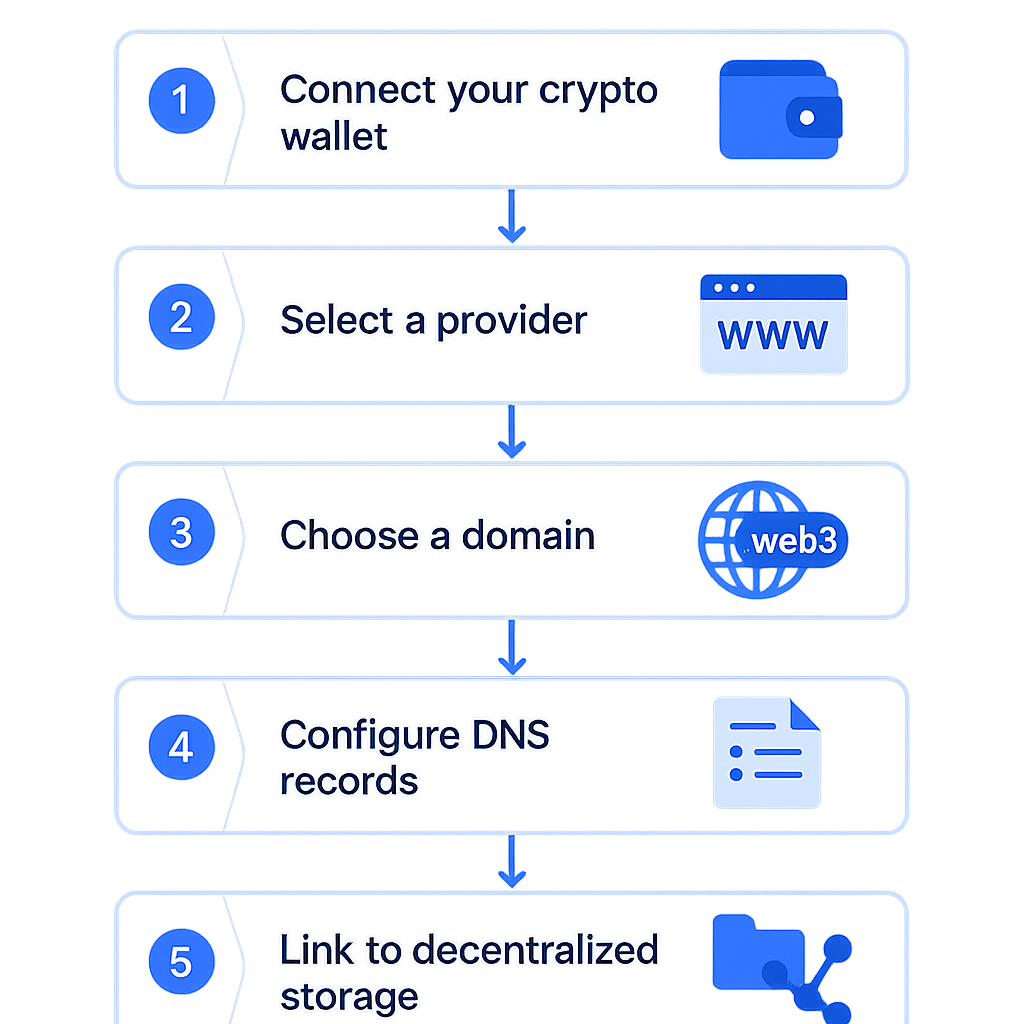
Gear Up for Your Web3 Domain Adventure
Begin by selecting a trusted Web3 domain provider like ENS or Unstoppable Domains. Prepare your crypto wallet (e.g., MetaMask) with adequate funds to cover registration and gas fees. Carefully choose domain extensions and securely store your wallet’s seed phrase.
Step 1: Snagging Your Web3 Domain
- Visit the provider’s platform and connect your crypto wallet.
- Search for an available domain name that fits your brand or identity.
- Complete the purchase by paying with cryptocurrency, noting possible gas fees.
Step 2: Tweak Your Domain Settings
Configure your domain by setting records such as Ethereum addresses and metadata. Adjust resolver contracts to define domain behavior and add text records for social links or other info using provider tools or third-party apps.
Step 3: Hook It Up to a Decentralized Site
Deploy your website content to decentralized storage networks like IPFS or Arweave using tools like Pinata. Link your domain to the content hash to ensure accessibility via compatible Web3 browsers or extensions.
Tips to Keep Things Running Smooth
Always renew your domain on time to avoid losing it. Keep configuration settings updated, monitor security risks, and consider using subdomains for different projects. Stay aware of blockchain network fees and keep your software current.
Tackling Common Hiccups with Web3 Domains
Troubleshooting Web3 domain issues can be tricky. This section identifies common problems and offers clear solutions to help you manage your domain like a pro.
| Problem | Fix | How to Avoid It |
|---|---|---|
| Domain Won’t Resolve | Verify resolver settings and clear app caches | Ensure wallet network settings are correct from the start |
| Can’t Access My Domain | Use backup seed phrases to regain access | Store keys securely in hardware wallets |
| Network’s Clogged Up | Switch RPC endpoints in your wallet | Check network status before making updates |
The Usual Suspects in Web3 Domain Woes
Common issues include domain resolution failures due to misconfigured resolvers, lost private keys causing access problems, wallet synchronization glitches, and confusing gas fee structures.
Fixing Those Pesky Connection Issues
Connection problems often stem from unreliable RPC endpoints, network congestion, or cached application data. Adjust wallet network settings, clear cache, or switch endpoints to resolve these issues effectively.
Sorting Out Ownership and Security Snags
Issues with domain ownership often arise from compromised wallets or lost keys. Use hardware wallets, enable multi-factor authentication, and consider separate wallets for domain management to mitigate risks. Recovery options in Web3 are limited, so proactive security is key.
Smart Tips and Security Hacks for Web3 Domain Management
Security is paramount when managing Web3 domains. This section shares best practices and practical tips to protect your decentralized assets from threats.
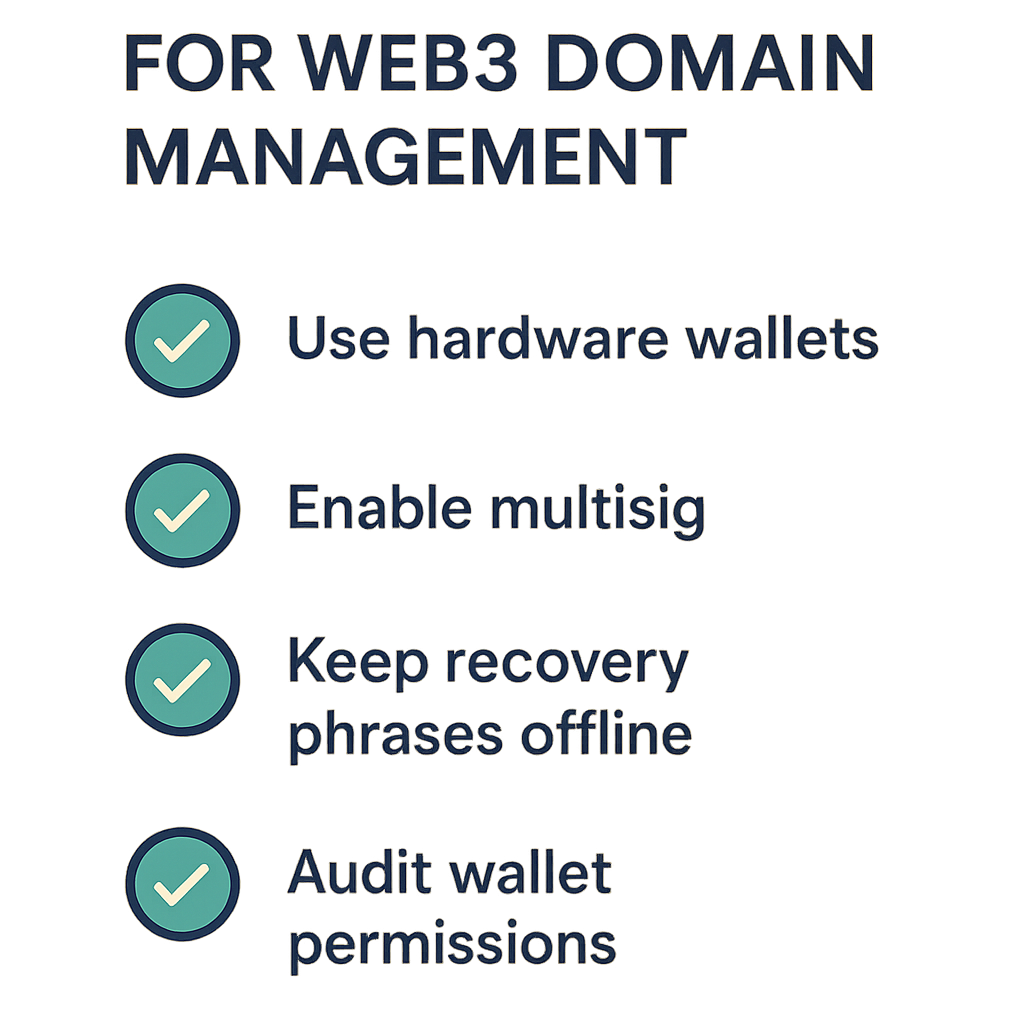
What Could Go Wrong with Web3 Domains
Potential risks include private key theft, phishing attacks, smart contract bugs, and careless subdomain management. Even established platforms like ENS face risks if security is lax. Awareness is the first step to defense.
Top Moves for Managing Like a Pro
- Use hardware wallets (e.g., Ledger) for key storage.
- Enable multisignature (multisig) for critical transactions.
- Keep recovery phrases offline and secure.
- Regularly audit wallet permissions and revoke unnecessary access.
Shielding Your Domain from Bad Actors
Monitor wallet activity for suspicious behavior using tracking tools. Choose registrars with audited smart contracts and tighten access controls for subdomains. Have a security incident response plan to quickly address threats and maintain trust.
Real Stories of Web3 Domains in Action
Real-world examples illustrate how individuals and businesses leverage Web3 domains for various purposes, demonstrating the practical benefits and creative applications of decentralized domain services.
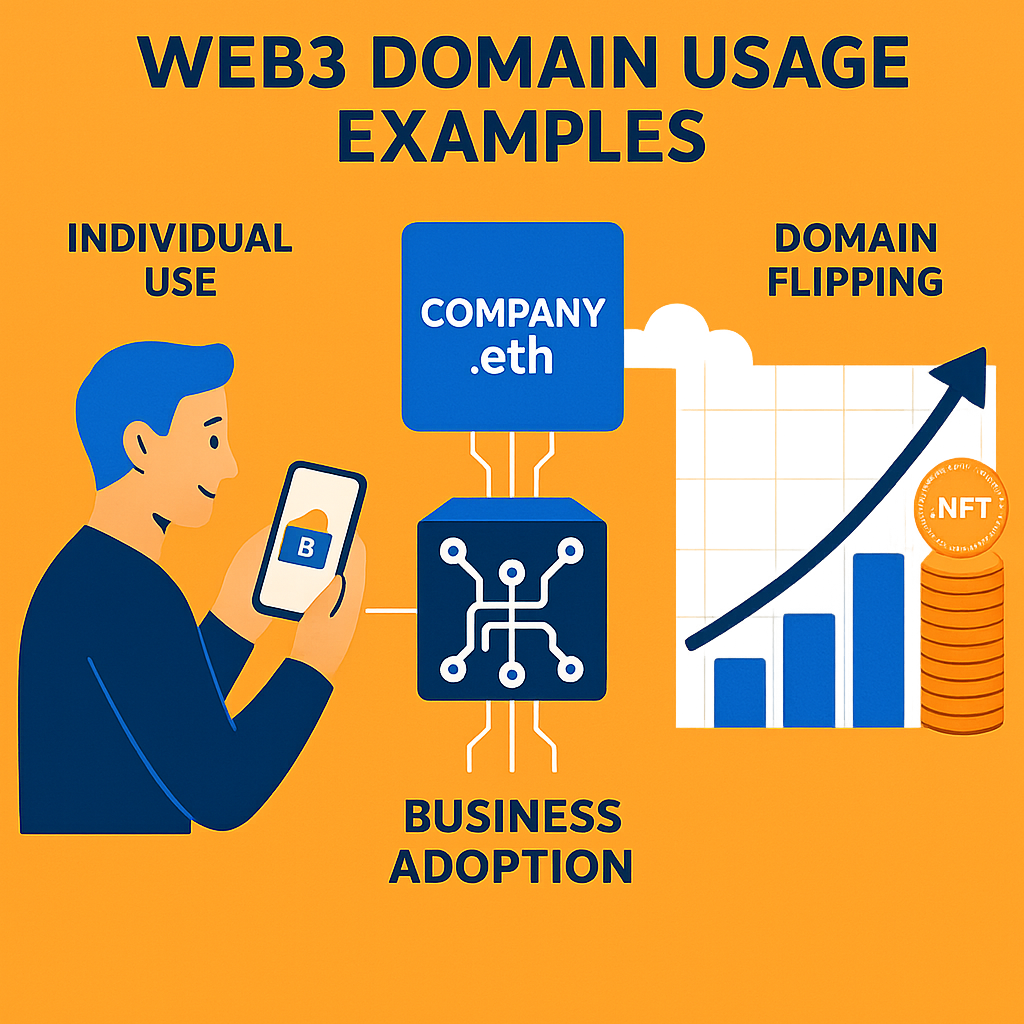
Case Study 1: Everyday People Using Web3 Domains
Individuals use Web3 domains for decentralized social profiles, streamlined crypto payments, and domain trading platforms like Freename. Early adopters of Handshake domains have seen significant financial gains, highlighting the potential value of these assets.
Case Study 2: Businesses Jumping on the Web3 Train
Businesses adopt Web3 domains to enhance brand security, launch decentralized applications (dApps), and integrate NFTs. Platforms like D3’s DomainFi and AltRoots provide tools for liquidity and trademark protection in the decentralized domain space.
Big Takeaways from These Examples
Early adoption can lead to valuable domain assets, but security is critical to avoid scams. Integrating Web3 domains into broader digital strategies benefits both individual users and enterprises, with interoperability helping scale adoption.
Must-Have Tools and Resources for Web3 Domains
Navigating Web3 domain management is easier with the right tools. This section lists top platforms, plugins, and educational resources to streamline your experience.
| Type | Name | Purpose |
|---|---|---|
| Platform | D3 Inc | Tokenizes domains with DNS-friendly blockchain technology |
| Platform | AltRoots | Provides trademark protection and Web3 domain services |
| Tool | Web3.bio | Connects Web3 and traditional Web2 identities |
| Learning | D3 Docs | Offers deep dives on domain ownership and DeFi integration |
Your Web3 Domain Questions Answered (FAQ)
This FAQ addresses common questions about Web3 domains, clarifying concepts, setup, management, and security concerns to ease your journey into decentralized domains.
Basic Stuff About Web3 Domains
Web3 domains are blockchain-based names with extensions like .eth, providing censorship-resistant digital identities. Compatible browsers include Brave and extensions like MetaMask.
How to Set Up and Manage Your Domain
Start by purchasing a domain on platforms like ENS, connect your crypto wallet, and configure DNS records for decentralized hosting. Domains can be transferred via blockchain transactions and often do not require renewal.
Security and Fixing Issues—Let’s Talk FAQ
While secured by blockchain tech, Web3 domains require careful key management. Losing access is tough to recover from, so backups and hardware wallets are essential. Resolver issues can be fixed by checking configurations and browser support.
Conclusion: Wrapping Up and Looking Ahead
This comprehensive guide has equipped you with the essentials of Web3 domain services. You understand their transformative potential, challenges, and practical setup steps. Looking forward, expect increased adoption, cross-chain interoperability, NFT integration, and metaverse applications to shape the future of Web3 domains.

Quick Recap of the Big Stuff
Web3 domains offer users true digital ownership and enhanced security, overcoming many limitations of traditional domains. Platforms like ENS continue to lead innovation despite some ongoing hurdles.
What’s Cooking for Web3 Domains Down the Line
Future developments include broader participation by major players, tighter cross-chain integrations, deeper NFT and metaverse use, and smoother user experiences that will drive mainstream adoption.
Keep Rolling with Your Web3 Domain Journey
Engage with platforms like ENS and Unstoppable Domains to secure your Web3 identity. Stay active in Web3 communities, maintain robust security, and watch for evolving browser compatibility and interoperability to maximize your domain’s potential.
References
- Introduction: Getting Started with Web3 Domain Services
- Introduction: Getting Started with Web3 Domain Services
- Introduction: Getting Started with Web3 Domain Services
- The Story and Basics Behind Web3 Domains
- The Story and Basics Behind Web3 Domains
- What Web3 Domains Really Are: Pros, Cons, and Everything Between
- Your Step-by-Step Roadmap to Setting Up Web3 Domains
- Your Step-by-Step Roadmap to Setting Up Web3 Domains
- Your Step-by-Step Roadmap to Setting Up Web3 Domains
- Your Step-by-Step Roadmap to Setting Up Web3 Domains
- Tackling Common Hiccups with Web3 Domains
- Tackling Common Hiccups with Web3 Domains
- Smart Tips and Security Hacks for Web3 Domain Management
- Smart Tips and Security Hacks for Web3 Domain Management
- Real Stories of Web3 Domains in Action
- Must-Have Tools and Resources for Web3 Domains
- Must-Have Tools and Resources for Web3 Domains
- Your Web3 Domain Questions Answered (FAQ)
- Your Web3 Domain Questions Answered (FAQ)
- Conclusion: Wrapping Up and Looking Ahead
- Conclusion: Wrapping Up and Looking Ahead
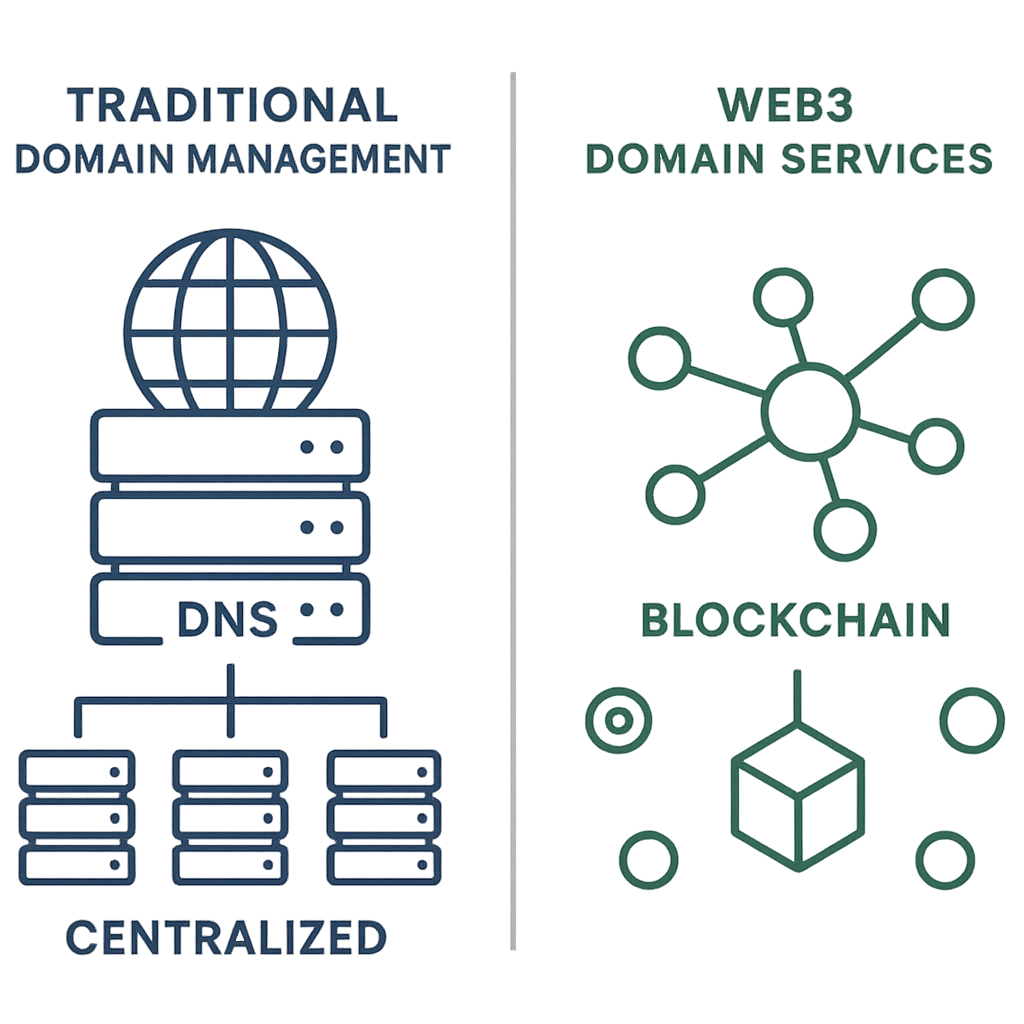
Leave a Reply